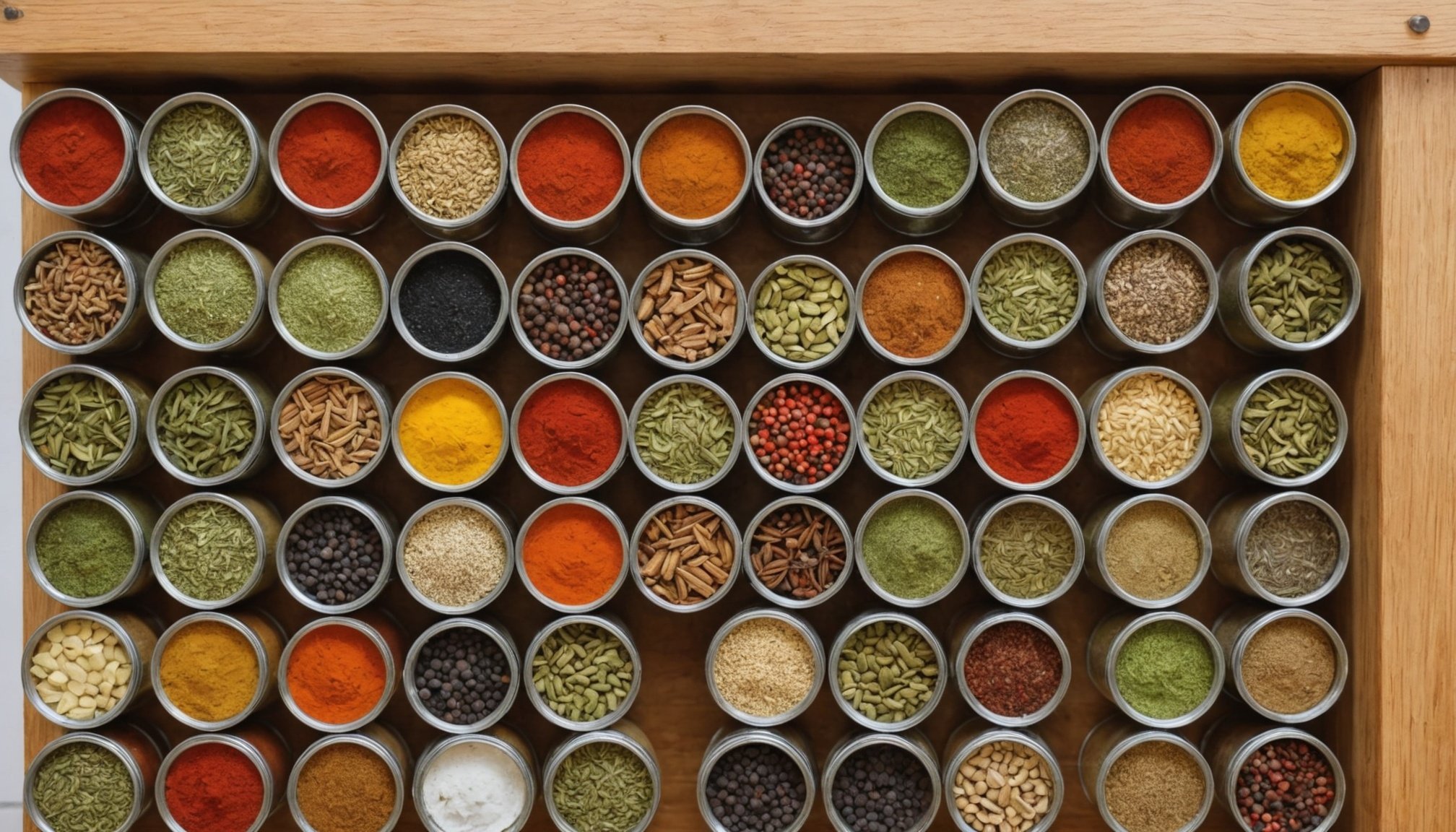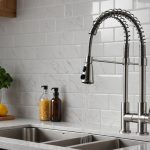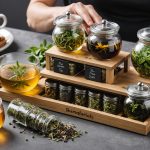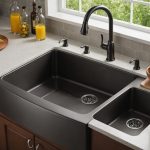Understanding the Need for a Sustainable Spice Rack
In the journey towards a greener future, sustainable kitchen solutions play a crucial role. Traditional kitchen storage options, often made from non-renewable resources, contribute to the growing environmental footprint. Transitioning to eco-friendly home improvement strategies can significantly mitigate this impact.
UK homes are increasingly recognising the importance of sustainability. With a focus on reducing waste and preserving natural resources, many homeowners are turning to sustainable kitchen solutions. By adopting practices that prioritise the environment, individuals can not only reduce their carbon footprint but also inspire future generations to live more sustainably.
In the same genre : Choosing the Ideal Kitchen Island Dimensions for Your Mid-Sized UK Home: A Complete Guide
Using recycled materials in DIY projects, such as creating a spice rack, presents multiple benefits. Recycled materials reduce demand for new resources, conserve energy, and cut down on landfill waste. Crafting a spice rack from salvaged wood or repurposed metal showcases how innovation meets responsibility. Moreover, it adds a personalised touch to your kitchen, all the while promoting an eco-friendly home improvement philosophy.
Taking steps towards integrating sustainable choices in daily life is not only beneficial for the environment but also supports local businesses that produce eco-friendly home improvement solutions. It’s this harmonious balance between practicality and sustainability that can lead to a more environmentally conscious lifestyle.
Have you seen this : Your essential handbook for choosing the ideal kitchen shelving units for your uk home
Materials and Tools Required
Creating a spice rack using sustainable materials is an excellent way to combine functionality with environmentally-friendly practices. Using DIY materials sourced from recycled kitchen items can significantly reduce waste and promote sustainability. Common materials suitable for this purpose include reclaimed wood, old jars, and metal door handles. Each of these can be transformed into unique, charming components of your spice rack.
Choosing the right tools for crafting is equally crucial. Basic tools like a small saw, screwdriver, and sandpaper are often sufficient. For more intricate designs, consider using a drill for precision and a level to ensure your spice rack sits perfectly on your wall.
To find these recycled materials in the UK, one might explore local charity shops, online marketplaces, or community recycling events. Don’t overlook your own home; unused items can often be repurposed creatively. Engaging with local recycling communities or forums can also provide insights into sourcing and creative ideas.
Equipped with these materials and tools, you’ll not only craft a practical spice rack but also contribute to a more sustainable lifestyle. Encouraging the use of recycled items helps in preserving resources while fostering a culture of conscious consumption.
Step-by-Step Instructions for Crafting Your Spice Rack
Creating a DIY spice rack requires a good step-by-step guide that makes the crafting process effective and enjoyable. With the right tools and instructions, anyone can build their own spice rack at home.
Preparing Your Workspace
Before diving into the crafting tutorial, it’s crucial to set up your workspace for both safety and efficiency. Clear any clutter and ensure good lighting. Have all your materials and tools ready, such as wood planks, screws, a saw, and a drill. Measuring tape should be handy too, allowing you to confirm dimensions as you proceed. Always keep a dust mask and safety goggles nearby to protect yourself while cutting materials.
Cutting and Assembling the Frame
With your workspace prepped, move on to cutting and assembling the frame of your spice rack. Measure your wood planks according to the desired size of your rack. Use a saw to cut these planks carefully. Precision is important—accurate cuts will ensure your frame fits together seamlessly. Afterward, align the pieces on a flat surface and begin attaching them with screws. A drill can speed up this process while maintaining stability.
Adding Shelves and Dividers
Once your frame is sturdy, consider the spice sizes in your collection to organize the shelves. Cut and attach horizontal shelves at varying heights to accommodate taller bottles or bags. You may also install vertical dividers for extra support and organization, ensuring that each spice has its own space, making retrieval easy and intuitive.
Design Ideas for Your UK Kitchen
With increasingly limited space in UK homes, kitchen design has evolved to offer stylish and functional solutions tailored to varied tastes. An essential aspect of modern kitchens is optimising space without sacrificing aesthetics. Space-saving solutions are prevalent, with vertical designs leading the charge. These designs provide more storage while maintaining an airy feel, perfect for smaller kitchens.
Vertical designs make efficient use of walls and ceilings, keeping counters clear and maximising the use of space. You can incorporate open shelving, which not only expands storage but also provides a platform to showcase decor or a curated collection of kitchenware, adding a personal touch.
Another element to consider is the spice rack aesthetics. Gone are the days of hiding spices in a drawer. Personalizing your spice rack allows you to integrate it into your kitchen’s overall design. Wall-mounted, magnetic spice racks or transparent jars can add both functionality and visual interest.
For those preferring a modern kitchen style, minimalistic metal racks with clear labelling offer a sleek look. Meanwhile, traditional styles may benefit from wooden racks or decorative jars that complement the cabinetry. Tailoring your storage solutions to your kitchen’s character not only enhances functionality but also creates a cohesive and inviting space.
Eco-Friendly Finishes and Paints
Making your home sustainable starts with choosing the right finishes and paints for surfaces such as wood. Let’s explore eco-friendly coatings in detail.
Non-toxic finishes and natural paints have surged in popularity as homeowners become more environmentally conscious. These products are free from harmful volatile organic compounds (VOCs), making them safer for both your health and the environment compared to traditional options. They come in a range of types, from natural paints made with earth-based minerals and plant extracts to eco-friendly coatings like waxes and oils derived from sustainable sources.
Using natural products for wood treatment goes beyond health and environmental benefits. Wood treated with non-toxic finishes often gains a rich patina over time, enhancing its natural beauty. Furthermore, these finishes allow the wood to breathe, helping to prevent moisture build-up that leads to rot and decay.
For application, it’s important to follow specific techniques to ensure durability and effectiveness. Start by preparing the surface properly through sanding and cleaning. Apply the finish in thin coats, ensuring even distribution. This not only enhances the finish’s appearance but also maximizes its protective qualities. Remember, eco-friendly coatings may require more frequent reapplication, but their benefits in safety and sustainability make them a worthwhile choice for conscientious homeowners.
Benefits of a Sustainable Approach to Kitchen Organization
Embracing sustainable living in your kitchen can lead to multiple advantages beyond simply reducing waste. By integrating eco-friendly practices like maintaining a sustainable spice rack, you can significantly decrease your environmental footprint. A spice rack, usually overlooked, can be reimagined using recycled materials, leading to minimized investment in plastic or non-biodegradable containers. This small step in kitchen organization showcases how mindful decisions can lead to impactful change.
DIY solutions stand out as practical alternatives when enhancing kitchen spaces. They allow for creativity while being kind to the planet. Crafting your own storage solutions using recycled or upcycled materials not only organizes your essentials effectively but also ensures that fewer resources are consumed. This approach often results in personalized, unique designs, enhancing the ambiance and functionality of your kitchen.
Adopting these practices offers substantial long-term benefits. Sustainable living fosters a deeper sense of responsibility and shifts daily habits towards more conscious, eco-friendly choices. Over time, reducing dependency on single-use items not only aids in preserving the environment but also often reduces household expenditures. By implementing sustainable kitchen practices now, you’re making a commitment to a healthier planet and a well-organized, efficient home.
Visual Aids and Additional Resources
Crafting can be a visually driven process; therefore, DIY visuals are incredibly helpful. They serve as an excellent starting point for any project, offering both clarity and inspiration. Whether you’re redesigning a spice rack or embarking on a more complex craft, these visuals can spark creativity and provide direction.
Numerous online platforms offer spice rack inspiration and step-by-step guidance through high-quality visuals. Websites with galleries of completed projects or platforms that host user-generated content usually provide a treasure trove of ideas.
When delving into the crafting world, having access to crafting resources is invaluable. Video guides are particularly beneficial, as they illustrate techniques and processes in real-time. Popular video platforms often feature channels dedicated to specific craft types, which help enthusiasts of all skill levels. Watching someone physically navigate through the crafting steps can be both reassuring and enlightening.
Community support groups, often found on social media or dedicated forums, are another rich resource. These communities not only offer crafting resources, but also provide feedback and encouragement. Engaging with these groups can fill knowledge gaps and foster collaboration, making crafting a less solitary and more engaging experience.
By leveraging these resources, you’re much more likely to enjoy the crafting journey and produce work you’re proud to display.






